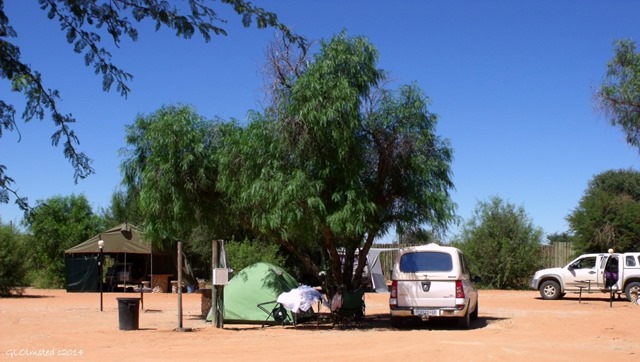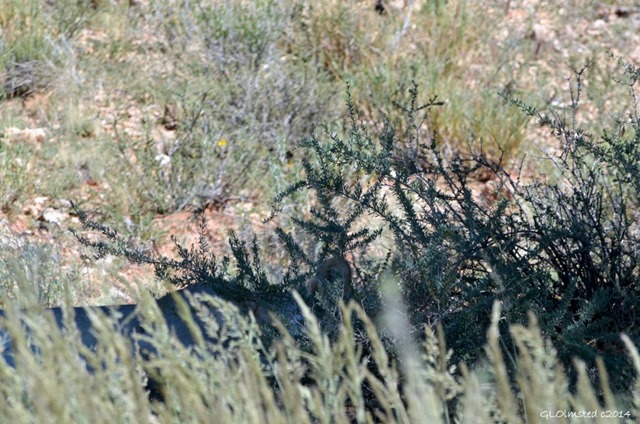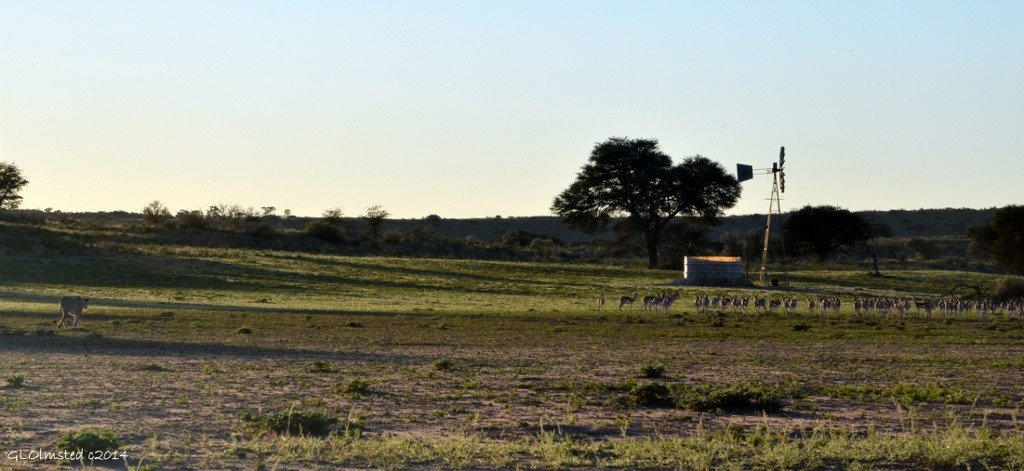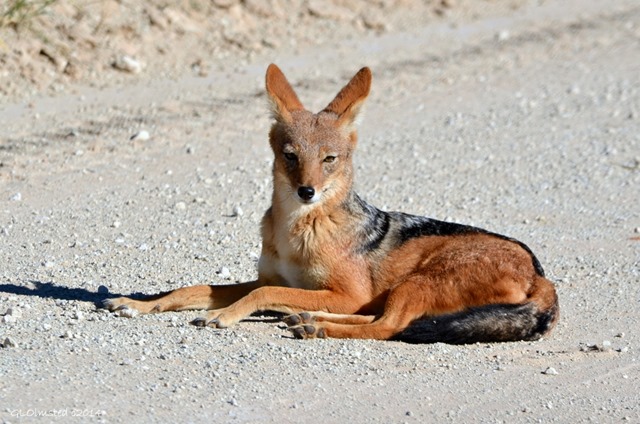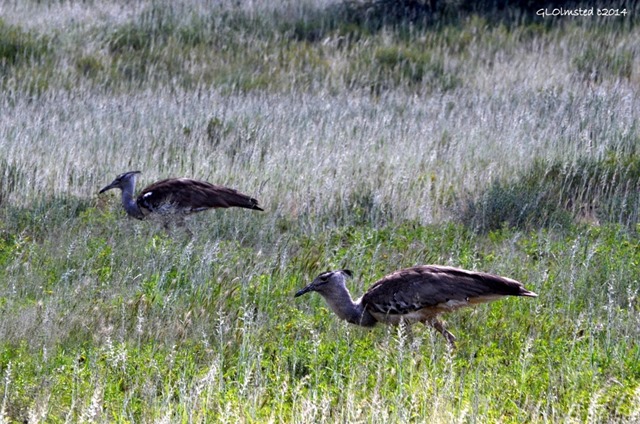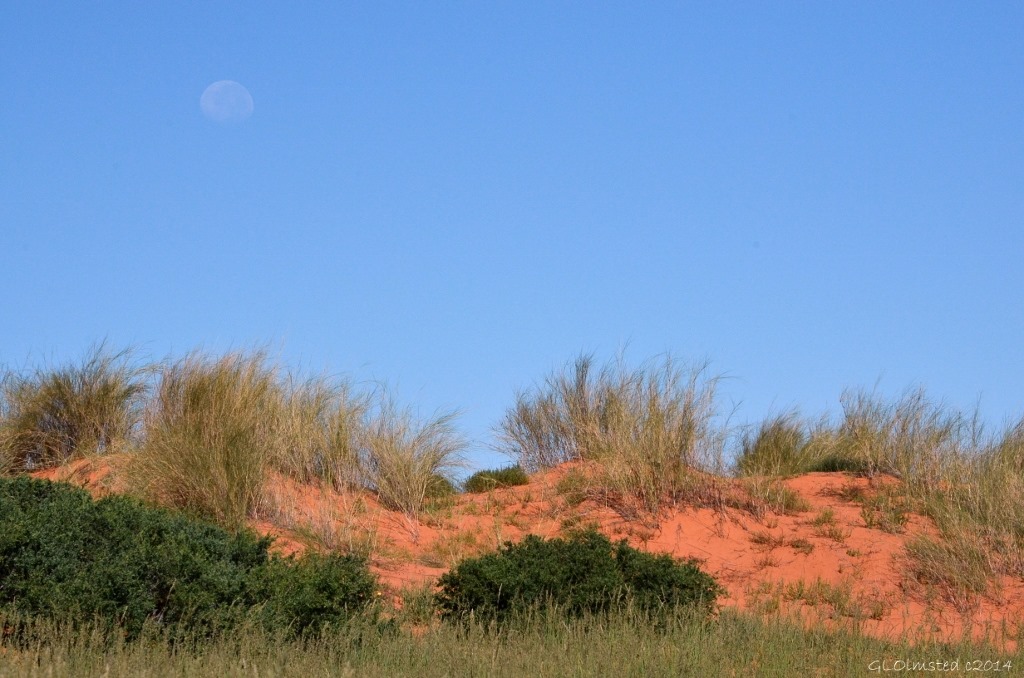 National Park #9 for my South Africa diversity Eco Tour, Kgalagadi Transfrontier Park, and I was really excited to see this remote northern landscape with red sand dunes and sparse vegetation. Even knowing we couldn’t see the entire park without a 4×4, I looked forward to visiting a place where the animals could be easily seen. Unfortunately for us unseasonal rains had watered the dry landscape and the grasses were tall. Which is great for the land and the animals, but not so much for wildlife sighting from a low riding 2×2 truck.
National Park #9 for my South Africa diversity Eco Tour, Kgalagadi Transfrontier Park, and I was really excited to see this remote northern landscape with red sand dunes and sparse vegetation. Even knowing we couldn’t see the entire park without a 4×4, I looked forward to visiting a place where the animals could be easily seen. Unfortunately for us unseasonal rains had watered the dry landscape and the grasses were tall. Which is great for the land and the animals, but not so much for wildlife sighting from a low riding 2×2 truck.
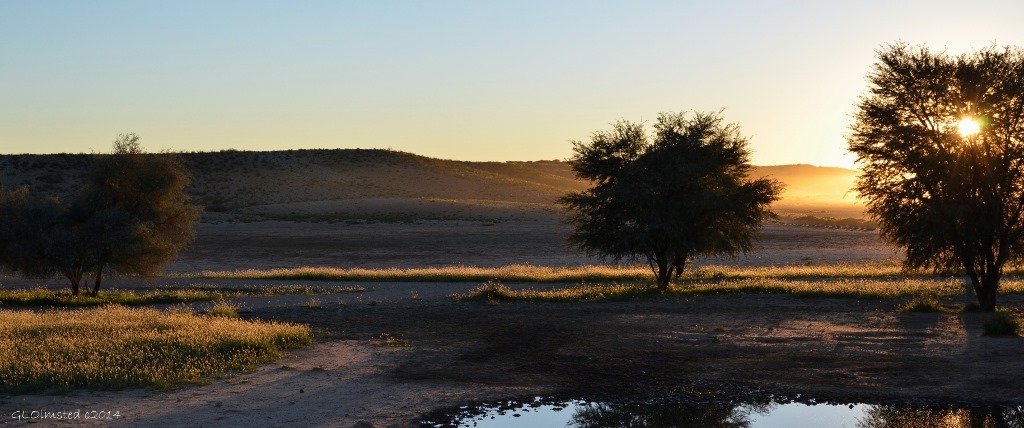 Kgalagadi means place of thirst, yet due to heavy rains in early March the landscape was covered in green. Originally the Kalahari Gemsbok National Park in South Africa and and the Gemsbok National Park in Botswana the two parks were combined and in 2000 becoming the Kgalagadi Transfrontier Park, an area covering 15,000 square miles (38,000 square kilometres), one of the largest conservation areas in the world. The park is managed as a single ecological unit with no physical barriers to allow for the free movement of animals.
Kgalagadi means place of thirst, yet due to heavy rains in early March the landscape was covered in green. Originally the Kalahari Gemsbok National Park in South Africa and and the Gemsbok National Park in Botswana the two parks were combined and in 2000 becoming the Kgalagadi Transfrontier Park, an area covering 15,000 square miles (38,000 square kilometres), one of the largest conservation areas in the world. The park is managed as a single ecological unit with no physical barriers to allow for the free movement of animals.
There are three rest camps with lodges, shops and swimming pools and six wilderness camps that provide little more than shelter and wash water. We’d made reservations to stay three nights at Mata Mata camp, a 45 mile (72 km) drive estimated to take 2.5 hours from the southern entrance to the park, then back for another four nights at Twee Rivieren camp. Also tried to get at least one night at Rooiputs wilderness camp with no fences, the only one we could drive to, but they were booked.
Both Mata Mata and Twee Riviern rest camps are located next to Namibia, but we didn’t cross that border. However one of the roads we regularly drove wove back and forth across the border into Botswana with no check points so we didn’t get our passports stamped.
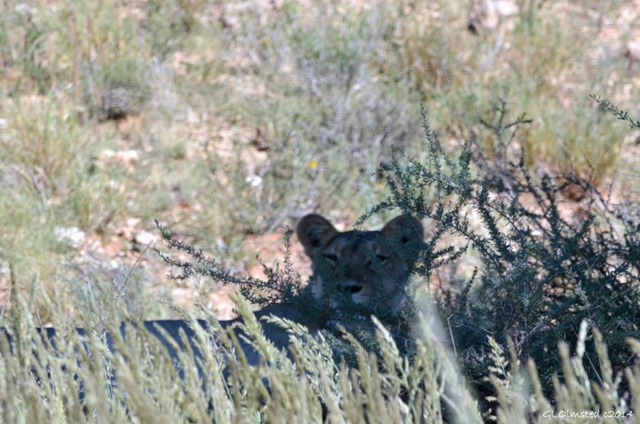 On our way to camp the first morning some people stopped along the road told us about a lioness lying in the shade not far back which we’d missed. That’s easy to do when the grass is tall. People on wildlife drives like to share their discoveries. So we turned around and sure enough she lifted her head just enough for us to see. What a nice first sighting.
On our way to camp the first morning some people stopped along the road told us about a lioness lying in the shade not far back which we’d missed. That’s easy to do when the grass is tall. People on wildlife drives like to share their discoveries. So we turned around and sure enough she lifted her head just enough for us to see. What a nice first sighting.
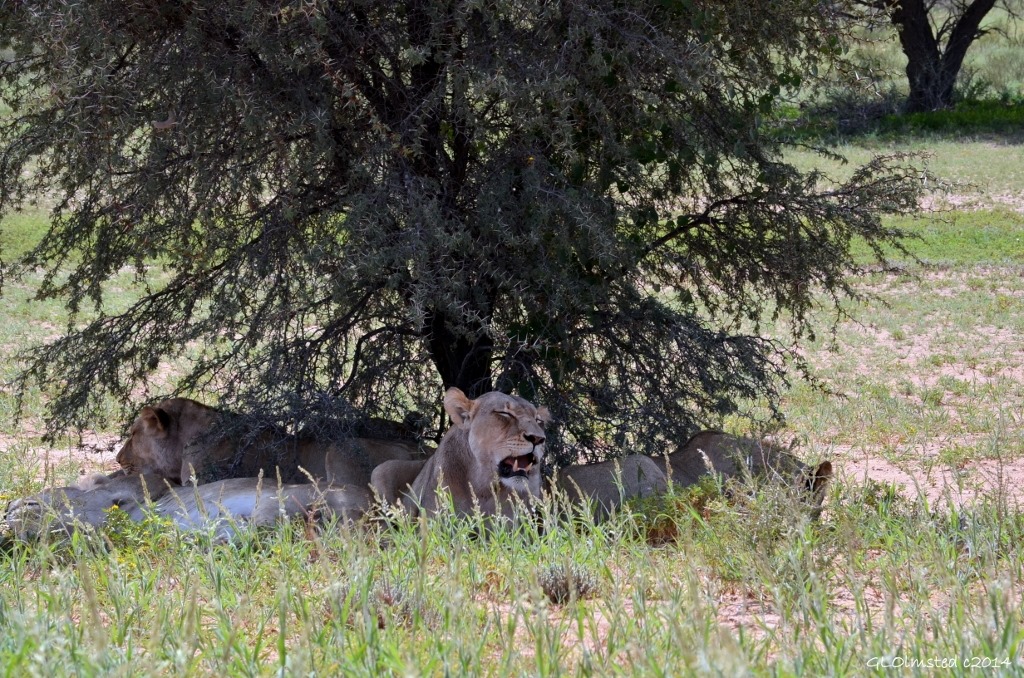 Plus we saw more lions later in the day also escaping the heat under whatever shade could be found. How many do you see crowded in here?
Plus we saw more lions later in the day also escaping the heat under whatever shade could be found. How many do you see crowded in here?
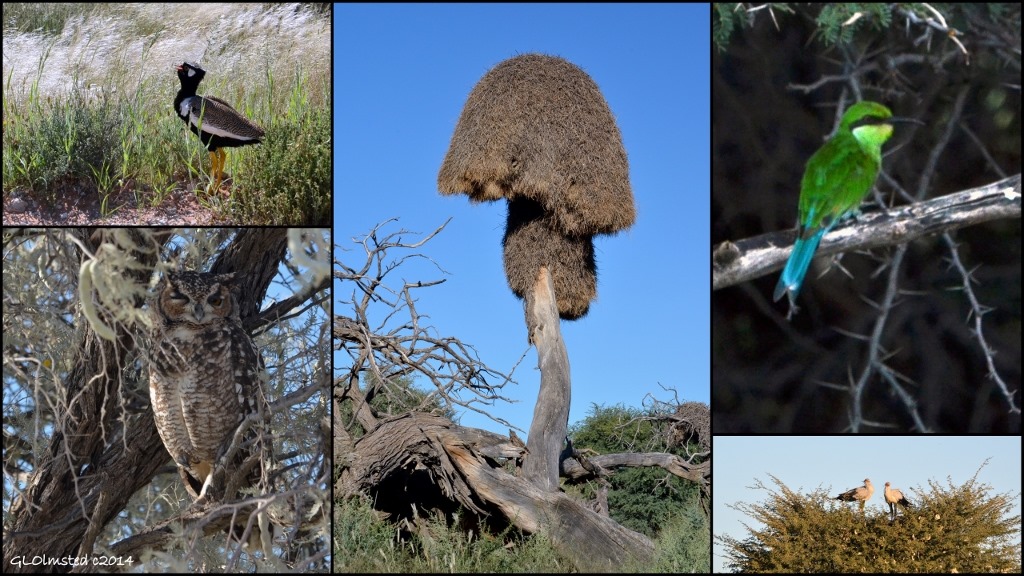 Black Korhan, Sociable Weaver’s nests, Little Bee-eater, Secretarybirds, Spotted Eagle Owl
Black Korhan, Sociable Weaver’s nests, Little Bee-eater, Secretarybirds, Spotted Eagle Owl
Because of the tall grass many sightings were along or in the road. We kidded about becoming birders and I guess there’s nothing wrong with that. Sociable Weavers, a common little brown bird, builds condo like nests that fill trees and top electric poles. Secretary birds, named for the feathers jutting from their heads like pencils in a secretary’s hair, were seen everywhere. Plus eagle eye Joan saw two spotted eagle owls.
 The five hour drive to Mata Mata camp was brutal with very rough road shaking Joan’s poor truck apart and we had planned to stay there 3 nights. But one was enough in the not very impressive campground by SANParks standards. We managed to trade our remaining nights there for Twee Rivieren where we entered the park. The yellow mongoose in camp digging for grubs was quite entertaining.
The five hour drive to Mata Mata camp was brutal with very rough road shaking Joan’s poor truck apart and we had planned to stay there 3 nights. But one was enough in the not very impressive campground by SANParks standards. We managed to trade our remaining nights there for Twee Rivieren where we entered the park. The yellow mongoose in camp digging for grubs was quite entertaining.
 The next day’s early morning drive again brought lions. First a lioness headed to a waterhole straight towards a herd of springbucks and we thought maybe she’d give chase and make a kill. How exciting that would be. But then a male followed and after they’d both had a drink they mated. My second time seeing this activity.
The next day’s early morning drive again brought lions. First a lioness headed to a waterhole straight towards a herd of springbucks and we thought maybe she’d give chase and make a kill. How exciting that would be. But then a male followed and after they’d both had a drink they mated. My second time seeing this activity.
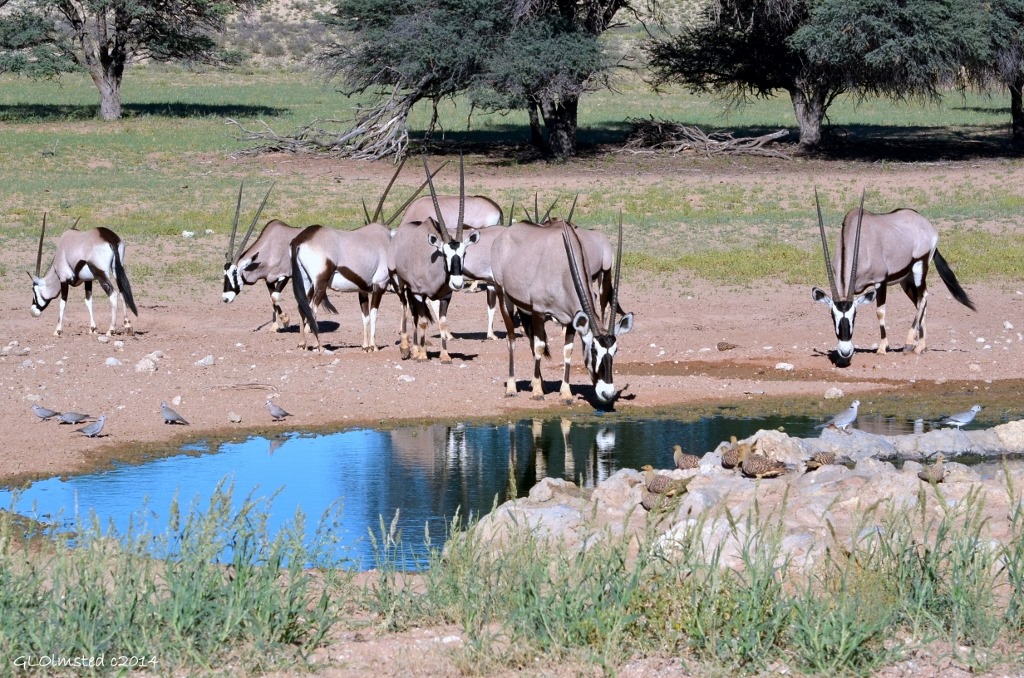 Hanging out by a waterhole offers the best wildlife sightings in this otherwise dry environment. We saw many herds of Gemsbok, the symbol of the Kgalagadi, which I think are the most majestic of the many antelopes seen in South Africa. Many of the antelopes have expressive faces with the almost war paint like markings.
Hanging out by a waterhole offers the best wildlife sightings in this otherwise dry environment. We saw many herds of Gemsbok, the symbol of the Kgalagadi, which I think are the most majestic of the many antelopes seen in South Africa. Many of the antelopes have expressive faces with the almost war paint like markings.
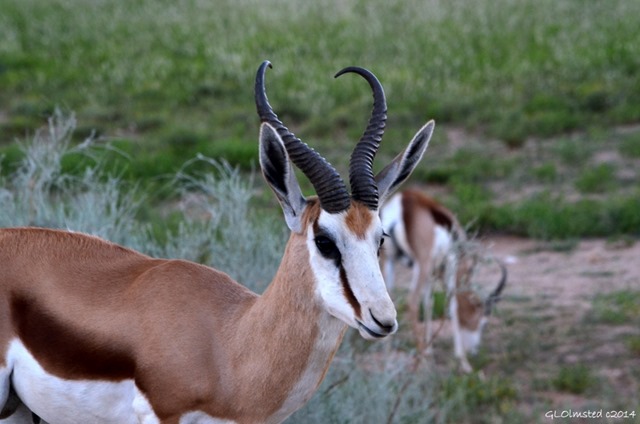 The third morning we drove the same nearby road into the dunes and saw more Gemsbok, ground squirrels, black-backed jackals, springbucks, butterflies and birds.
The third morning we drove the same nearby road into the dunes and saw more Gemsbok, ground squirrels, black-backed jackals, springbucks, butterflies and birds.
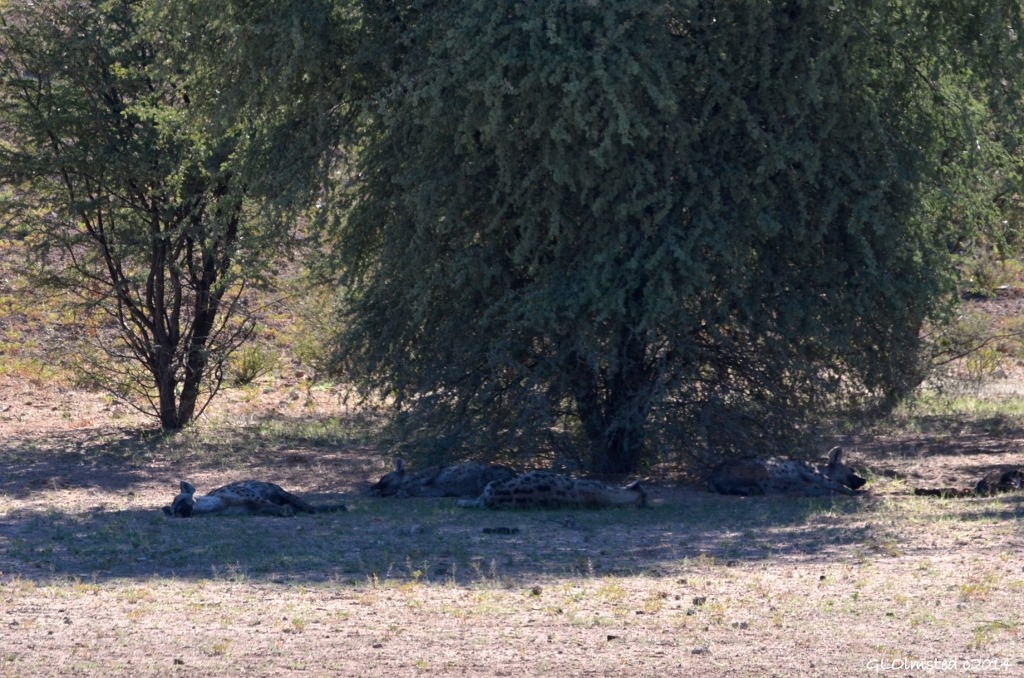 Pretty much the same on the fourth day along with a group of hyenas napping in the shade.
Pretty much the same on the fourth day along with a group of hyenas napping in the shade.
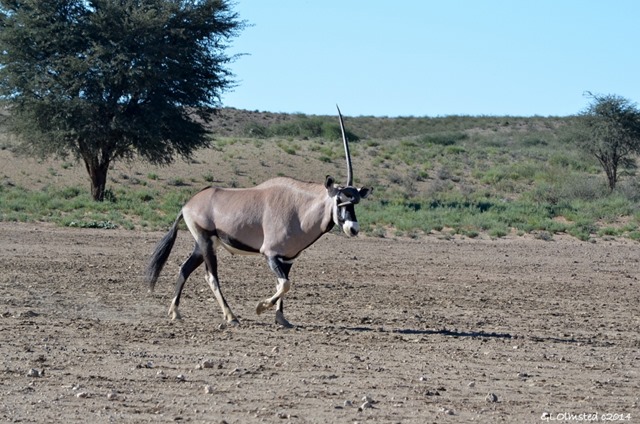 Plus we saw a Gemsbok with a very unusual horn. At first we thought it was growing into its eye but it was just curved in front. Although it may have been born with this deformity it’s more likely the horn was broken during a fight.
Plus we saw a Gemsbok with a very unusual horn. At first we thought it was growing into its eye but it was just curved in front. Although it may have been born with this deformity it’s more likely the horn was broken during a fight.
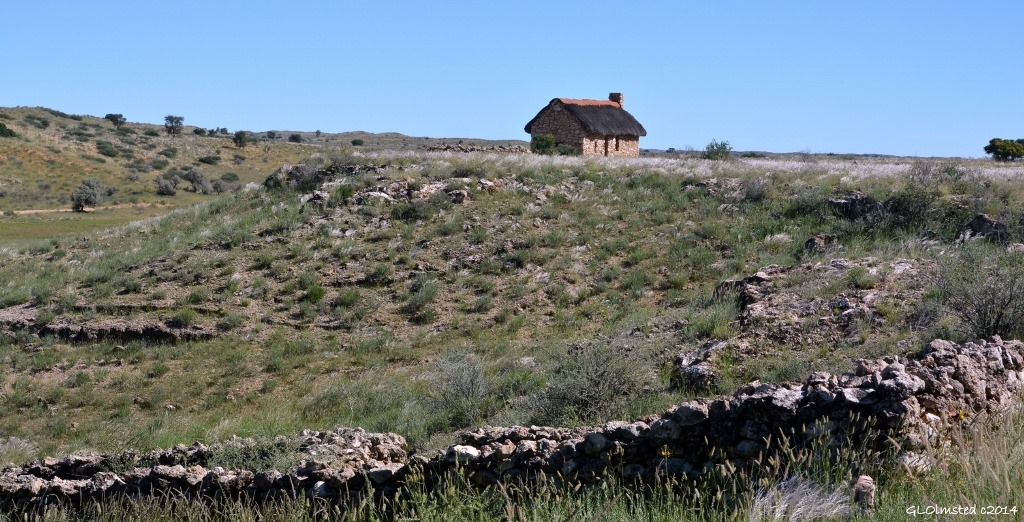 Both the Nossob or Auob rivers were dry, but water runs underground and drilled wells provide water to animals. Many of these wells were dug at the beginning of World War I to provide troops with water in case of an invasion into South West Africa. Guards were recruited to maintain and protect the boreholes and settled with their families and livestock. After the war they stayed on, however it was a struggle to survive in this harsh environment and eventually hunting denuded the game. In 1931 the Kalahari Gemsbok National Park was established to protect the remaining wildlife. It may look green in these images but the Kalahari typically only receives 3-7 inches of rain a year at best.
Both the Nossob or Auob rivers were dry, but water runs underground and drilled wells provide water to animals. Many of these wells were dug at the beginning of World War I to provide troops with water in case of an invasion into South West Africa. Guards were recruited to maintain and protect the boreholes and settled with their families and livestock. After the war they stayed on, however it was a struggle to survive in this harsh environment and eventually hunting denuded the game. In 1931 the Kalahari Gemsbok National Park was established to protect the remaining wildlife. It may look green in these images but the Kalahari typically only receives 3-7 inches of rain a year at best.
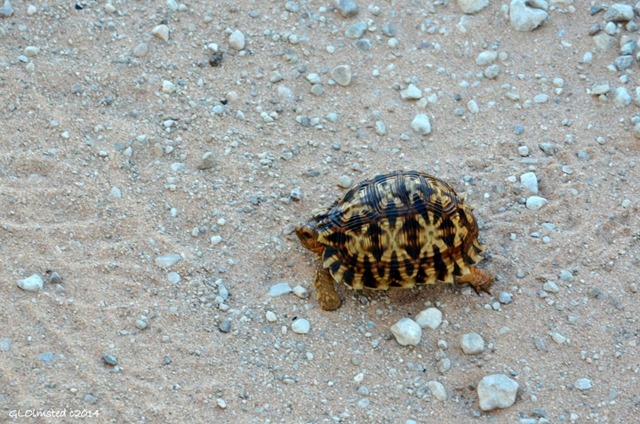 When we reserved for seven days the Kgalagadi website indicated that some roads were drivable by sedan and more were 4×4 only. We only stayed 4 days because all the roads were terrible. We tried to change out the remaining reservation for nights at Augrabies Falls National Park but were told no. Joan sent an email to the park manager about the road problem and was told some road grading equipment was broken, but no refund. Since then they’ve changed their website to read the roads “are not sedan friendly.”
When we reserved for seven days the Kgalagadi website indicated that some roads were drivable by sedan and more were 4×4 only. We only stayed 4 days because all the roads were terrible. We tried to change out the remaining reservation for nights at Augrabies Falls National Park but were told no. Joan sent an email to the park manager about the road problem and was told some road grading equipment was broken, but no refund. Since then they’ve changed their website to read the roads “are not sedan friendly.”
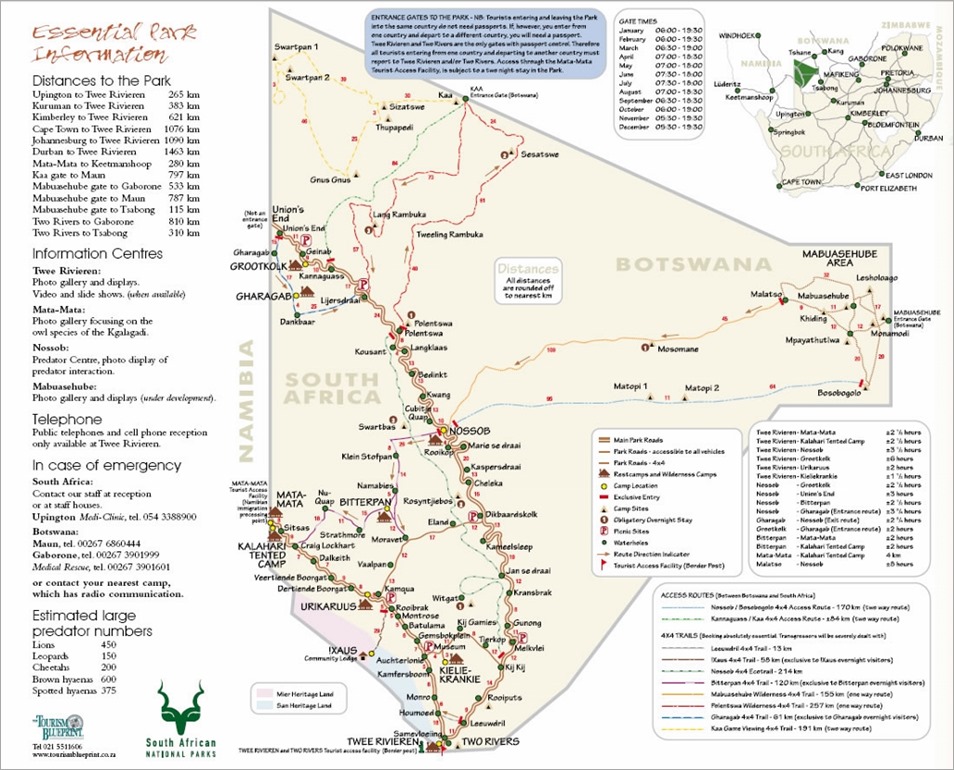 I was a little disappointed after the eight other amazing national parks visited. However it was still a very interesting landscape with wildlife and I’d like to go back with a 4×4 as we barely saw any of the park. Plus I really want to stay in camps with no fences to feel more a part of the place. Maybe next visit will be time to also explore neighboring Namibia.
I was a little disappointed after the eight other amazing national parks visited. However it was still a very interesting landscape with wildlife and I’d like to go back with a 4×4 as we barely saw any of the park. Plus I really want to stay in camps with no fences to feel more a part of the place. Maybe next visit will be time to also explore neighboring Namibia.

